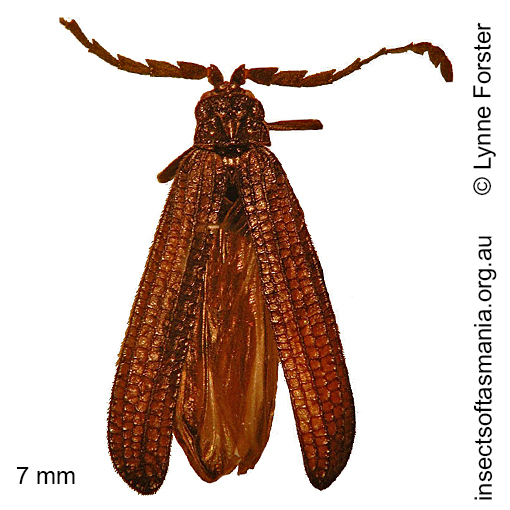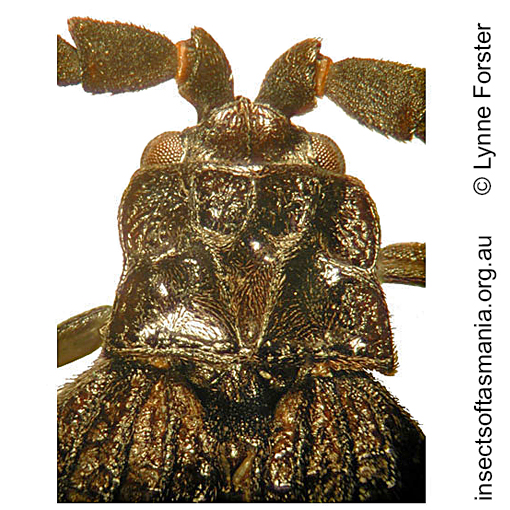
Xylobanus insignipennis (Blackburn, 1900) (a species of net-winged beetle)
Basis for Tasmanian occurrence
Classification
Suborder: Polyphaga
Superfamily: Elateroidea
Family: Lycidae
Sumfamily: Metriorrhynchinae
Tribe: Metriorrhynchini
Morphology
Flightedness: winged and assumed capable of flight
Morphology (characterised by L. Forster): — Elytra completely black and with elytral punctures in single rows — Pronotum black, divided into seven distinct areolets — Wings present.
Source literature on morphology and taxonomy (*primary taxonomic source, where identified):
Lea, A.M. (1909b). Revision of the Australian and Tasmanian Malacodermidae. Trans. Roy. Entom. Soc. Lond. 1909: 45-251. [Page 48]
Ecology
Association with dead wood or old trees: obligately saproxylic
Ecological attributes: — May occupy logs or trunks of Eucalyptus obliqua, at least temporarily, since found having emerged within six years of felling (Grove et al., 2009).
Collection method(s) for TMAG material: — Emergence trapping from log of Eucalyptus obliqua — Flight intercept trapping (trough below Malaise trap) — Hand collection (substrate not specified) — Malaise trapping — Pitfall trapping — Sticky trapping on Eucalyptus obliqua — Trunk window trapping (Harrison, 2007).
Source ecological literature:
Grove, S.J. (2009b). Beetles and fuelwood harvesting: a retrospective study from Tasmania’s southern forests. Tasforests 18: 77-99.
Grove, S. et al. (2009). A long-term experimental study of saproxylic beetle … succession in Tasmanian Eucalyptus … logs… In: Fattorini, S. (Ed.), Insect Ecology and Conservation. Research Signpost, pp. 71-114.
Harrison, K.S. (2007). Saproxylic beetles associated with habitat features in Eucalyptus obliqua trees in the southern forests of Tasmania. PhD thesis, Dept. of Zoology, Univ. of Tasmania, Hobart.
Yee, M. (2005). The ecology and habitat requirements of saproxylic beetles native to Tasmanian wet eucalypt forests: potential impacts of commercial forestry practices. PhD thesis, Univ. of Tasmania, Hobart.


